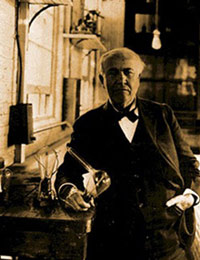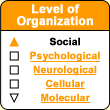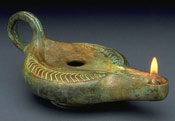|
|


Human beings are not
designed to monitor nuclear generating stations at 4 in the
morning–the task simply conflicts with their biological
clocks. And the result is accidents such as those at Three
Mile Island and Chernobyl.
Other famous accidents also have been attributed to impaired
judgment and concentration due to working night shifts. Two
examples are the Exxon Valdez oil spill in Alaska
and the chemical gas leak in Bhopal, India.
Less famous are all the highway accidents caused by reduced
alertness due to fatigue. It is estimated that nearly 40% of
all highway accidents are caused by being sleepy or falling
asleep at the wheel. It is also suspected that from 10 to 15%
of all fatal accidents involving truckers are caused by fatigue.
And these episodes of drowsiness or sleeping at the wheel appear
to be eight times more common at night than in the daytime. |
Alterations in people’s
sleep schedules can cause them to experience significant
mood swings even if they are otherwise in excellent psychological
health, with no personal or family history of psychological
disorders. |
|
|
For countless millennia, our
hunter-gatherer ancestors evolved in response to
the naturally alternating rhythms of day and night and of the
seasons. Being active after nightfall involved so many
more risks than benefits that no one would have dared to attempt
it.
But then, somewhere between 800 000 and 400 000
years ago, humans learned how to control fire, which
was very likely the discovery that led to more organized human
societies. Fire not only was useful for cooking and for keeping
warm, but also opened a breach into the nighttime realm of darkness.
| The first system used exclusively for
lighting was the oil lamp. The earliest oil
lamps date back as far as 20 000 B.C. and consisted of a simple
hollowed-out stone holding a wick in a pool of oil. |
|
The Egyptians and the Cretans began making candles from
bees’ wax as early as 3000 B.C. However, the first attempts
to use candles for public lighting did not occur until the 16th
century, when the Court of Paris, responding to public fear caused
by the street attacks that were so common at night, published an
edict encouraging citizens to place lighted candles in their windows
from 9 in the evening on.
 |
In 1829, the Rue de la Paix became
the first street in Paris to be equipped with gaslights.
But the real revolution in our relationship with the night
came after Thomas Edison developed the incandescent light
bulb in 1879. This invention extended the work day into hours
that until then had always been devoted to sleep. A simple
light bulb had made it possible for industry to operate 24
hours per day, and hence to require employees to work at
night. |
Later technological developments in the 20th century, such as
intercontinental flight, also affected our natural sleep patterns,
but none of these developments has had such a sweeping impact as
night work.
Because
companies have never stopped striving to increase their productivity,
more and more employees now have to work at night or on irregular
schedules. It is estimated that over 20% of the workers in industrialized
countries now work irregular schedules, which inevitably disturb
their sleep patterns.
Very often, even workers who have been
working at night for many years still get about two hours’ less
sleep per night than the average person. Their bodies never succeed
in adapting completely to this inverted lifestyle, and they therefore
suffer from a chronic lack of sleep.
Many cyclical physiological phenomena occur
in the human body that make it easier for us to be awake in the
daytime and asleep at night. Thus night work forces our bodies
to be active when they want to be asleep, and to try to fall asleep
when several daylight-driven internal processes tend to keep us
awake.
The poorer, shorter sleep experienced by night workers not only
can cause health problems (such as chronic fatigue, ulcers, and
indigestion) for these individuals, but also, because of the way
it reduces alertness, can make these individuals and sometimes
society as a whole more vulnerable to serious accidents (see sidebar).
Working night shifts on a regular schedule is generally distinguished
from doing so on an irregular schedule, because
each of these schedules has its own specific effects.
|
|






